Listen to the audio version here.
In our previous blog post, we discussed the breadcrumbing blunders of US climate policy, and American politicians’ latest failure to unify around prioritizing urgent climate action. With the Supreme Court stifling executive action, and Republicans (alongside Democrat coal billionaire Joe Manchin) limiting Congressional action, the passage of the Inflation Reduction Act was lucky. But it’s still not enough— not even close.
At the same time that this bill has been celebrated as a political win for climate action, this summer has been marked by record-breaking heat waves across the country and the world. A May 2022 study found that climate change made the brutal heat wave in India and Pakistan this spring 30 times more likely. And Pakistan’s recent “monster monsoon” flooding— which climate change most likely made a lot worse— has taken the lives of thousands, and displaced millions more. This is what climate injustice looks like: Pakistan contributes less than one percent of global emissions, and yet, the country is ranked eighth most vulnerable to climate change in the Global Climate Risk Index.
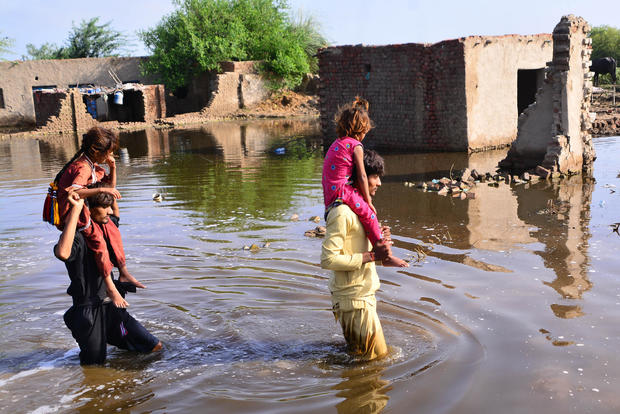
The less serious governments are about taking climate action, the more serious these climate impacts become. The good news is, non-governmental organizations, or NGOs, are sometimes able to fill in the gaps. These organizations, ranging from non-profits to for-profits, are doing what governments can’t— or won’t— through a variety of mechanisms, including investment, education, employment, research, journalism, activism, and community building. We’ve compiled a list below of ten climate action NGOs we think are doing especially good work. (Please note that many of them are US-based, as a follow-up to our latest post on US climate policy.) Let’s take a look!
1. Climatebase
We’ll start with our longtime partner, Climatebase. They’re a job board and a fellowship, with the goal of getting more people to work on solutions to climate change, around the world and across all sectors. Climatebase is leading the way towards disproving a persistent cultural belief in our capitalist society— the assumption that taking action to protect our planet threatens economic productivity and job creation. In 2019, a nationwide survey suggested that one in three American adults believed that climate action policies hurt the economy.
But according to a 2020 report by the World Resources Institute, the majority of the US (on a state-by-state basis) is actually growing their economies while reducing emissions. This same report found that zero-emissions power generation is responsible for more than twice as many jobs as fossil fuel power generation. Perhaps the most salient finding was that the longer climate action is delayed, the more we’ll end up paying in the long run— and not just in dollars, but in lives. The team at Climatebase understands the urgency of our climate crisis, and has taken a practical, solutions-oriented approach.
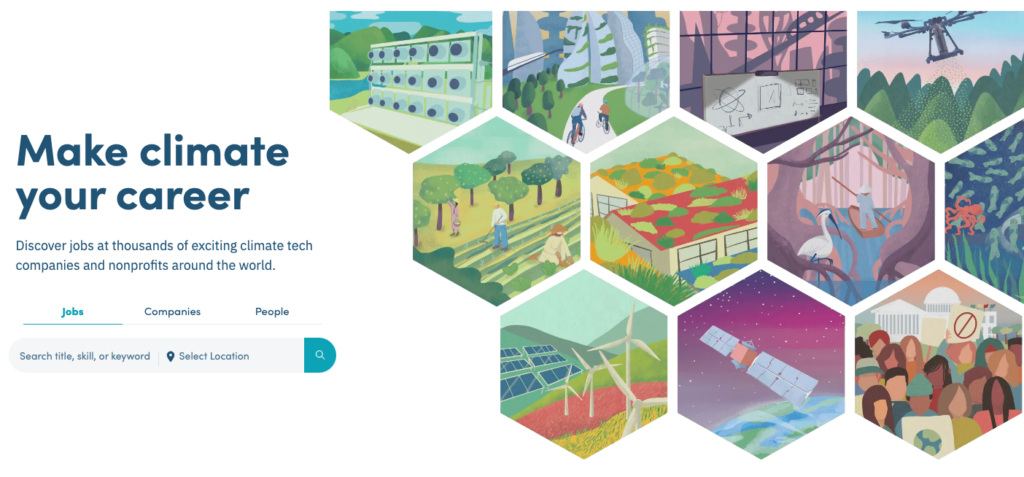
Through their job board, Climatebase has connected half a million people with more than 40,000 opportunities at over 3,500 climate and environmental organizations and companies, and is itself an employer. Climatebase also runs a fellowship program, which is currently accepting applications for its third cohort. The fellowship connects budding professionals with seasoned experts across the environmental field, providing climate solutions education, mentorship, networking, and more to support peoples’ work in climate. Learn more at climatebase.org.
2. Project Drawdown
As the term “climate solutions” is becoming more mainstream, it’s also getting co-opted by corporations and other entities who would like us to think they’re helping solve the climate crisis, but in fact are doing the exact opposite. Don’t be fooled by the greenwashing; if you want to know what climate solutions actually work, and how they work, you can find accurate information at Project Drawdown. (There’s a reason Climatebase has partnered with them!) As a research-driven non-profit, Project Drawdown has spent the last decade conducting rigorous review and assessment of existing ways to address climate change across all sectors, from energy to transportation to food and more.
What’s unique about Project Drawdown is that, for them, addressing climate change is not just about reducing emissions from now into the future; it’s about drawing down the carbon that’s already been emitted— all 35 billion tons of it. Obviously, this is no easy feat, but both the logic and the science are clear: if we want to ensure a livable future for all, we must reach this point of drawdown, when the levels of greenhouse gasses in the atmosphere stop climbing and start to steadily decline, preventing the worst of climate catastrophe and bringing the Earth back into balance. This is Project Drawdown’s mission, and they aim to do it as quickly, safely, and equitably as possible. According to their analysis, the top five climate solutions— in terms of emissions reduction potential— are reducing food waste, promoting plant-rich diets, family planning and education, refrigerant management, and tropical forest restoration. And there are dozens more.
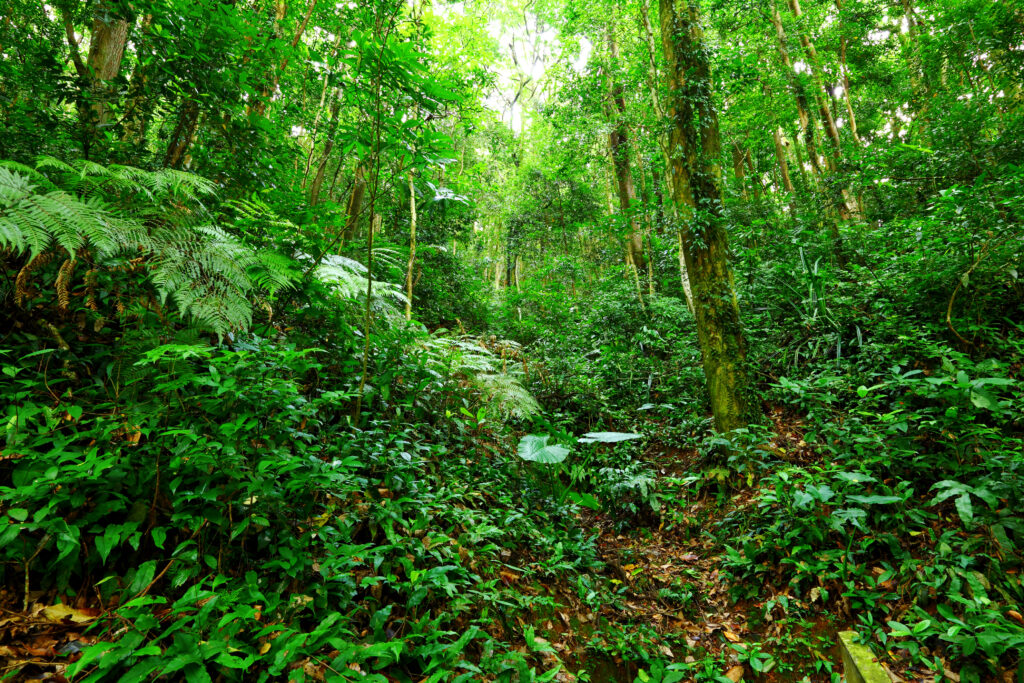
In total, Project Drawdown presents over 100 solutions, all of which are currently available, financially viable, and growing in scale— and, if we make the best use of all of them, will achieve drawdown by mid-century. The solutions are laid out in a straightforward and digestible way, making Project Drawdown a great go-to resource for anyone who’s interested, from students to policymakers to activists to industry. They’ve partnered with many similar organizations to spread their message and empower people to implement climate solutions in their own cities, neighborhoods, workplaces, and day-to-day lives. They also do this type of work in the private sector. Their reach is global, and ever-expanding. To learn more about their programs and dig into the solutions themselves, visit drawdown.org.
3. The Greenlining Institute
Climate change is a global problem that affects everybody on some level, but its impacts can be more pronounced in certain communities due to environmental racism. In the United States, racist government policies like redlining have made it nearly impossible for many people of color to live in areas safe from polluting industries and the host of health risks they cause. These inequities are only compounded when climate disasters strike, as we’ve seen with the ongoing water crisis in Jackson, Mississippi. Nearly one-third of the population lives beneath the poverty line, the majority is Black, and they have all been subject to the city’s decaying water infrastructure for decades— but the recent flash floods sent it over the edge. Everyone in the city lost access to running water for several weeks, and some residents have now filed a class action lawsuit against the city and its contractors for chronic mismanagement and neglect (which the EPA has only just begun to investigate).

The Greenlining Institute is a US-based non-profit organization centered around providing resources to communities like Jackson so that they are able to overcome environmental racism and build healthy lives that are also poised to meet the challenges of climate change. The Greenlining Institute does this through a robust leadership training program, as well as giving funds directly to frontline communities— about $339 billion to date. Through their co-sponsorship of the Transformative Climate Communities initiative, the Greenlining Institute is helping expand equitable access to housing and homeownership, emissions-free transportation, and clean energy. Learn more about their work at greenlining.org.
4. Indigenous Environmental Network
Economic and environmental injustice falls heavily on Indigenous communities worldwide. Most have had their land stolen and exploited by colonial empires like Britain, Spain, and, more recently, the United States. The Indigenous Environmental Network, or IEN, was founded in 1990 as a grassroots effort to defend against these infringements on human rights and the rights of nature. IEN is based primarily in Turtle Island (the traditional name for the land that settlers claimed as the US and Canada). Here, IEN has identified more than 25 economic and environmental challenges that Indigenous peoples face, including inadequate health regulations and enforcement, improper waste management, industrial pollution, deforestation, government-backed fossil fuel extraction, and many more.
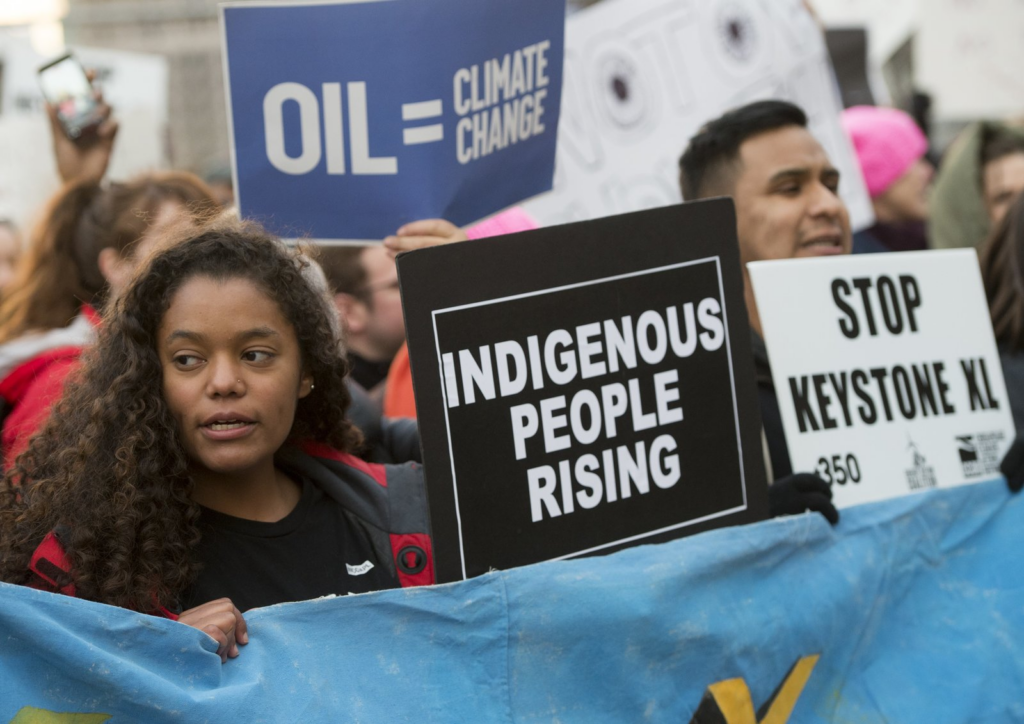
IEN has played an important role in building the transformative climate policy framework of the Green New Deal, and saw success in protesting against oil pipelines on Native lands through their #KeepItInTheGround campaign, which has been effective against the expansion of the Keystone XL pipeline. IEN has also recently been able to expand their reach globally, helping form partnerships and alliances intertribally and with other like-minded organizations, in order to build the capacity of Indigenous peoples to protect the land, air, and waters that give us all life. Learn more at their website, ienearth.org.
5. Foundation For Climate Restoration (F4CR)
When it comes to taking meaningful action on climate change, keeping fossil fuels in the ground is a given— but what about all that’s already been burned? The greenhouse gases that have already been emitted over the past several centuries will continue to heat up the planet for many centuries more, until we take them out. The Intergovernmental Panel on Climate Change, or IPCC, has reported that carbon removal is a vital strategy for meeting our climate goals. The good news is, there are plenty of safe, effective ways to remove carbon from the atmosphere and store it permanently, through both nature and technology that mimics nature. One of the main tech-based solutions is called direct air capture (basically a big machine that captures CO2 directly from the air), while natural solutions include regenerative agriculture and soil carbon sequestration.
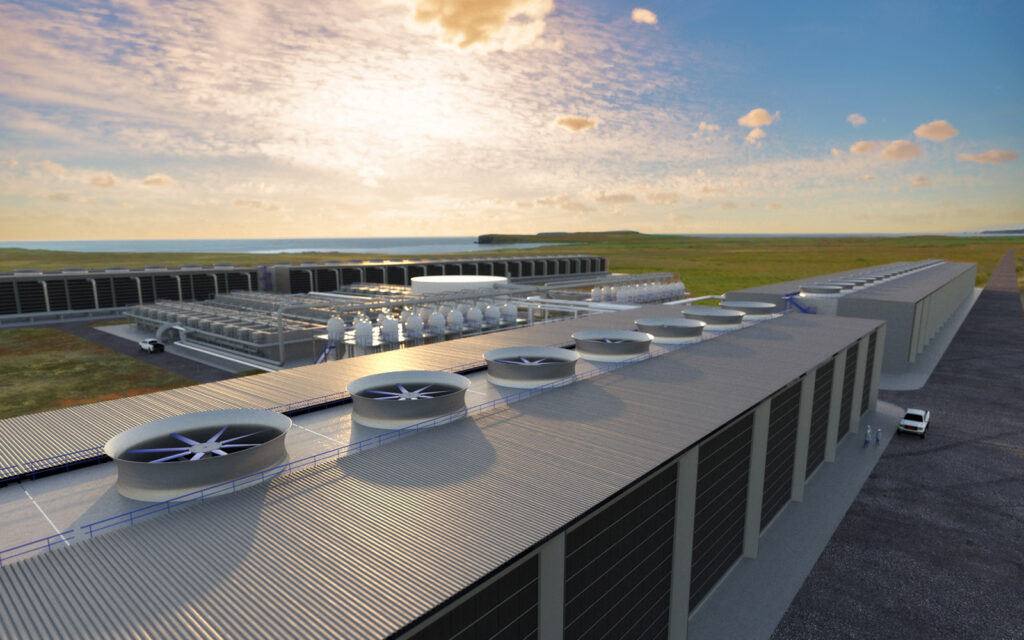
The Foundation for Climate Restoration, or F4CR, is a non-profit dedicated to advancing these kinds of solutions, in the effort to restore the Earth’s climate back to the pre-industrial levels that we know are safe. F4CR works primarily through education and advocacy, forming many partnerships— notably the Global Carbon Removal Partnership (GCRP), which launched last year at the UN climate conference, COP26. The GCRP is a multi-stakeholder global partnership, led by the Global South, that’s focused on creating the enabling mechanisms to scale responsible carbon removal. The GCRP does this through policy and agenda setting, creating incentives, and connecting supply and demand. They also have a standardization arm, which aims to verify the legitimacy of carbon removal claims in terms of transparency, durability, performance, and social and environmental equity.
The Foundation for Climate Restoration uses a similar framework in their own Solution Series, which delves into carbon removal strategies one by one and evaluates them based on their durability, financeability, scalability, and equity. So far, they’ve looked at direct air capture, forest carbon, soil carbon, and coastal blue carbon. F4CR also offers guides for bringing climate restoration curriculum to your school, engaging with lawmakers, and starting your own chapter to advance climate restoration locally or regionally. If the idea of restoring the climate piques your interest, F4CR is always looking for volunteers to help with their established chapters, youth program, educational content development, or fundraising efforts. Learn more at F4CR.org.
6. GRID Alternatives
Restoring the climate is critically important, and so is reducing emissions; we cannot have one without the other. Energy demand continues to rise as more of the world gains access to electricity, and climate change is already starting to expose the weaknesses of modern electricity grids— underscoring the obvious need to replace high carbon-emitting sources with clean, sustainable alternatives. One of the many groups working on this is GRID Alternatives, a non-profit organization that provides solar panel installation and funding services for individuals, multi-family homes, communities, other non-profits, and Indigenous tribes, across the US and internationally. GRID’s vision is a world powered by renewable energy that benefits everyone. They aim to use renewable energy as a tool to advance economic and environmental justice; in the US, GRID Alternatives has been the largest nonprofit installer of clean energy in low-income communities for the last 20 years. Internationally, GRID’s clean energy access work is lighting up off-grid communities in Nepal, Nicaragua, and Mexico.
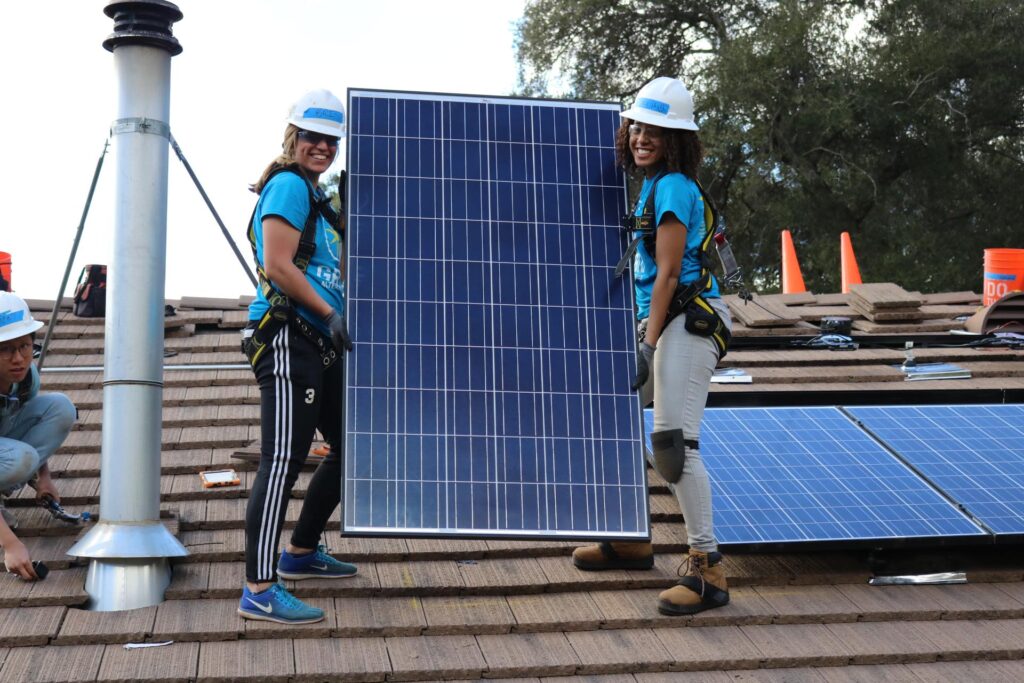
Apart from powering homes with clean energy, GRID also powers clean transportation— and not the kind that claims to be clean because it’s electric, but fails to mention that the electricity still comes from dirty fossil fuels. GRID is at the forefront of helping communities move away from fuel-based transportation, to solar-powered electric vehicles, charging infrastructure, bikes, public transit, and more. This not only reduces emissions, but saves people money and improves air quality as well as quality of life. GRID also partners with low-income communities to save money on energy bills through their Energy for All Program. In 2020, GRID installed 400 electric vehicle chargers, trained over 20,000 people in technical solar skills, and helped advance green bills such as 100% clean energy by 2050 in Virginia, among other successes. Anyone can sign up to get training from GRID, or be a part of the community by joining events, volunteering, or partnering with them to help promote their initiatives. Learn more at their website, gridalternatives.org.
7. Fridays For Future
While organizations like GRID are helping to reduce emissions in some communities, most of the world is still seeing emissions rise; the clean energy transition is not happening fast enough, even as climate change is careening us toward total collapse. That’s where social movements like Fridays For Future come in— to put pressure on governments and institutions to accelerate the energy transition and take urgent action on our climate emergency. Fridays For Future started in 2018, after then 15-year-old Greta Thunberg protested climate inaction in front of the Swedish parliament every school day for three weeks straight. Other young activists began to join her, and they created the hashtag #FridaysForFuture, sparking a worldwide climate movement that is entirely youth-led and organized, and now in every country across the globe.

Through these civil protests, youth climate activists simply try to hold elected representatives accountable and urge them to do their job— to protect and serve their constituents. So far, around 18 million Fridays For Future activists have gone on strike to demand that their country’s leaders create equitable pathways to limit global warming to below 1.5 degrees Celsius compared to pre-industrial levels. The sheer number of people who have joined the movement to #SchoolStrikeForClimate is impressive, and could be a sign of hope, but it also shows how dire our climate emergency truly is. In September of this year, a Fridays For Future strike event was held in Nigeria, where this year alone, severe flooding has killed at least 300 people, and displaced another 100,000. Fridays For Future encourages everyone to join a strike, or if there isn’t one in your area, to register your own. They provide resources on how to organize a strike and how to do it safely and effectively. Learn more at fridaysforfuture.org.
8. Grist
A big part of why movements like Fridays For Future can be so successful is the mass media that spread awareness about them. Grist is a journalistic publication that has spent the last two decades reporting almost exclusively on climate change, with an emphasis on solutions and justice. The word “grist” is defined as “useful material, especially to support an argument”. As a non-profit, independent outlet, Grist shares news and information about current events and issues related to climate change, showing its importance as it intersects with other topics like energy, politics, culture, and equity. But Grist doesn’t just report on climate change. They’re also known for their effort to actually do something about it.
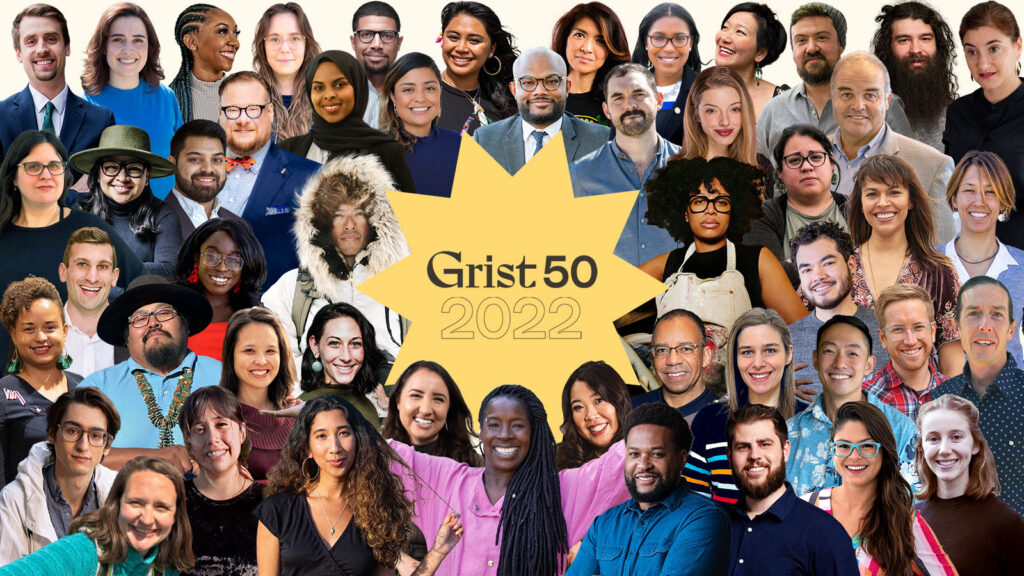
Grist has a climate solutions lab called “Fix”, where they combine creative storytelling with network-building and events. Every year, they put out a list of 50 “Fixers”, who are nominated by readers as the top emerging leaders in climate, equity, and sustainability. In contrast to the climate doom and gloom so often seen in the news, Grist aims to amplify stories of progress and reasons for optimism. Anyone can be a part of the Grist community by attending their events, signing up for their newsletter, pitching a story to them, or joining their fellowship program, which develops the skills of early-career journalists while deepening their environmental knowledge and storytelling. Learn more at their website, grist.org.
9. ecoAmerica
While Grist plays a role in advocating for climate action through Fix and its reporting, other organizations take a more direct approach. ecoAmerica, for example, is on a mission to build public support, political resolve, and institutional leadership for climate solutions in the US. They work in five key sectors: health, higher education, business, communities, and faith-based organizations. To engage with these distinct groups, they’ve founded targeted initiatives, including Climate for Health, which brings together over 1.5 million members of health and medical organizations for climate advocacy; Blessed Tomorrow, which does the same for faith-based organizations with respect to their unique faith traditions; and Path to Positive Communities, which builds the capacity of local leaders to address climate opportunities in their own communities.

Due to these efforts, ecoAmerica has reached thousands of people across local, state, and national levels. ecoAmerica also conducts a variety of climate research, surveying the public about their perspectives on climate change, and testing different ways to communicate about climate change in order to more effectively inspire action. ecoAmerica also holds annual summits and forums, with the aim of convening prominent leaders from diverse sectors to build and share knowledge, enhance collaboration, and inspire new strategies for effective climate action. They offer plenty of educational resources based on their activities and their findings— for example, how to communicate effectively about climate change and how to implement climate solutions in your own community. Learn more at ecoamerica.org.
10. Anthropocene Institute
Last, but certainly not least, we want to highlight the work of our sponsor, the Anthropocene Institute. The term “Anthropocene” refers to the geological age in which we are currently living— the age in which humans are the dominant influence on the Earth’s climate and environment. The Anthropocene Institute believes that it’s up to us, as humans, to make sure that this impact is positive, by leveraging our ingenuity and collaborative capacities to build innovative solutions to our most pressing problems. A vital part of Anthropocene’s work is sponsoring projects that are aligned in purpose and values, such as SpaceshipOne, ecoAmerica, and Climatebase.
The Anthropocene Institute acts as a synergistic organization, connecting scientists, entrepreneurs, thought leaders, universities, industry groups, governmental agencies, investors, advocates, and creatives to work together on priorities like ocean protection and clean energy technologies. Anthropocene has played an important role in dispelling the myth that nuclear energy is anti-environmental, and that people don’t want it; in fact, public support for nuclear has never been higher. Anthropocene has also helped advance the burgeoning field of solid-state atomic fusion, a form of nuclear energy that promises to be even cleaner, safer, and greener, and to unlock true energy abundance. These efforts represent only a portion of Anthropocene’s impact. To learn more, visit their website, anthropoceneinstitute.com.
